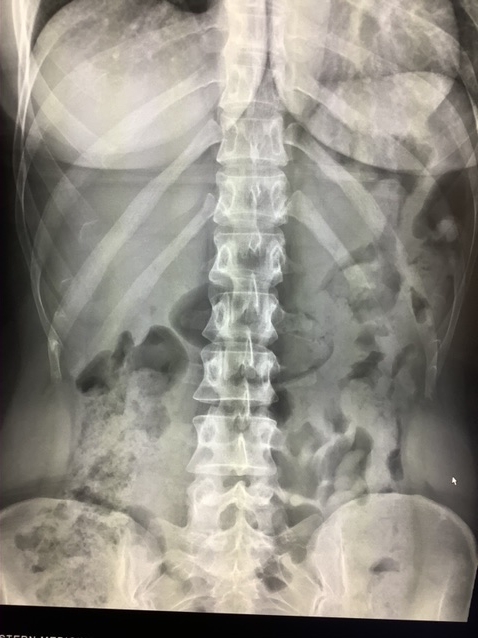Terminal Ileum
The terminal ileum plays an important role in the digestive system, acting as the final section of the small intestine. This part of our body is responsible for the absorption of essential nutrients and the facilitation of waste movement towards the large intestine. Understanding its functions, health issues, and care is fundamental for maintaining a healthy digestive system.
The Role of the Terminal Ileum in Digestion
The terminal ileum is specifically designed for the absorption of vitamin B12 and the reabsorption of bile acids, which are crucial for the digestion and absorption of fats. By efficiently absorbing these substances, it supports our body’s nutritional needs and contributes to the digestive process.
Common Health Issues Affecting the Terminal Ileum
Various conditions can affect the terminal ileum, leading to digestive health problems. Conditions such as Crohn’s disease, a type of inflammatory bowel disease (IBD), can cause inflammation in the terminal ileum, leading to symptoms like abdominal pain, diarrhea, and weight loss.
Symptoms and Diagnosis of Terminal Ileum Conditions
Symptoms associated with terminal ileum issues can vary but often include abdominal discomfort, unexplained weight loss, and changes in bowel habits. Healthcare professionals may use a combination of blood tests, imaging studies, and endoscopic procedures to diagnose conditions affecting the terminal ileum. Early diagnosis and treatment are key to managing these conditions effectively.
The Importance of Imaging in Diagnosing Terminal Ileum Issues
Imaging techniques play an important role in diagnosing conditions affecting the terminal ileum. Techniques such as MRI, CT scans, and ileocolonoscopy provide detailed images of the terminal ileum, helping doctors identify inflammation, blockages, or other abnormalities. These imaging methods are essential tools in the diagnostic process, offering insights that guide treatment decisions.
Key Imaging Techniques for the Terminal Ileum
Magnetic Resonance Imaging (MRI)
MRI is a non-invasive imaging technique that uses magnetic fields and radio waves to create detailed images of organs and tissues within the body. For the terminal ileum, MRI can be particularly useful in identifying inflammation, abscesses, and fistulas without the need for ionizing radiation. MR Enterography is a specific type of MRI designed to provide detailed images of the small intestine, making it highly effective for diagnosing conditions such as Crohn’s disease.
Computed Tomography (CT) Scan
CT scans combine a series of X-ray images taken from different angles to create cross-sectional images of the body. When it comes to the terminal ileum, CT Enterography is a specialized technique that enhances the images of the small intestine. This method is useful for detecting inflammation, blockages, and other abnormalities. However, due to the use of ionizing radiation, its use is carefully considered, especially in younger patients and those requiring multiple follow-ups.
Ileocolonoscopy
Ileocolonoscopy is an endoscopic procedure that allows direct visualization of the interior of the colon and the terminal ileum. During the procedure, a flexible tube with a camera on the end is inserted through the rectum into the colon, and into the last part of the small intestine. This technique not only provides images but also allows for biopsy, which is crucial for diagnosing conditions like Crohn’s disease.
Capsule Endoscopy
Capsule endoscopy is a procedure that uses a tiny, wireless camera to take pictures of the digestive tract. The camera is enclosed in a small capsule that the patient swallows. As the capsule moves through the digestive tract, it takes thousands of pictures, which are transmitted to a device worn by the patient. This method is particularly useful for examining the middle part of the small intestine, which is difficult to reach with traditional endoscopy.
The Importance of Imaging in Treatment Planning
Imaging plays a crucial role not only in diagnosing conditions of the terminal ileum but also in guiding treatment decisions. Detailed images help healthcare providers assess the severity of a condition, monitor response to treatment, and plan for surgeries if necessary. For instance, imaging can reveal the extent of inflammation or damage, helping to determine whether medical therapy or surgical intervention is appropriate.
Treatment Options for Terminal Ileum Conditions
Treatment for issues affecting the terminal ileum varies depending on the condition and its severity. Options may include medication to reduce inflammation, dietary changes to manage symptoms, or surgery to remove damaged sections of the intestine in severe cases. Collaborating with a healthcare provider to develop a personalized treatment plan is important for managing these conditions effectively.
Conclusion
The terminal ileum is a key component of the digestive system, with a significant role in nutrient absorption and waste processing. Understanding its functions, common health issues, and the importance of early diagnosis and treatment can help individuals maintain digestive health. Through preventive measures and advancements in medical research, we can continue to improve the care and management of terminal ileum conditions, contributing to better digestive health and overall well-being.

